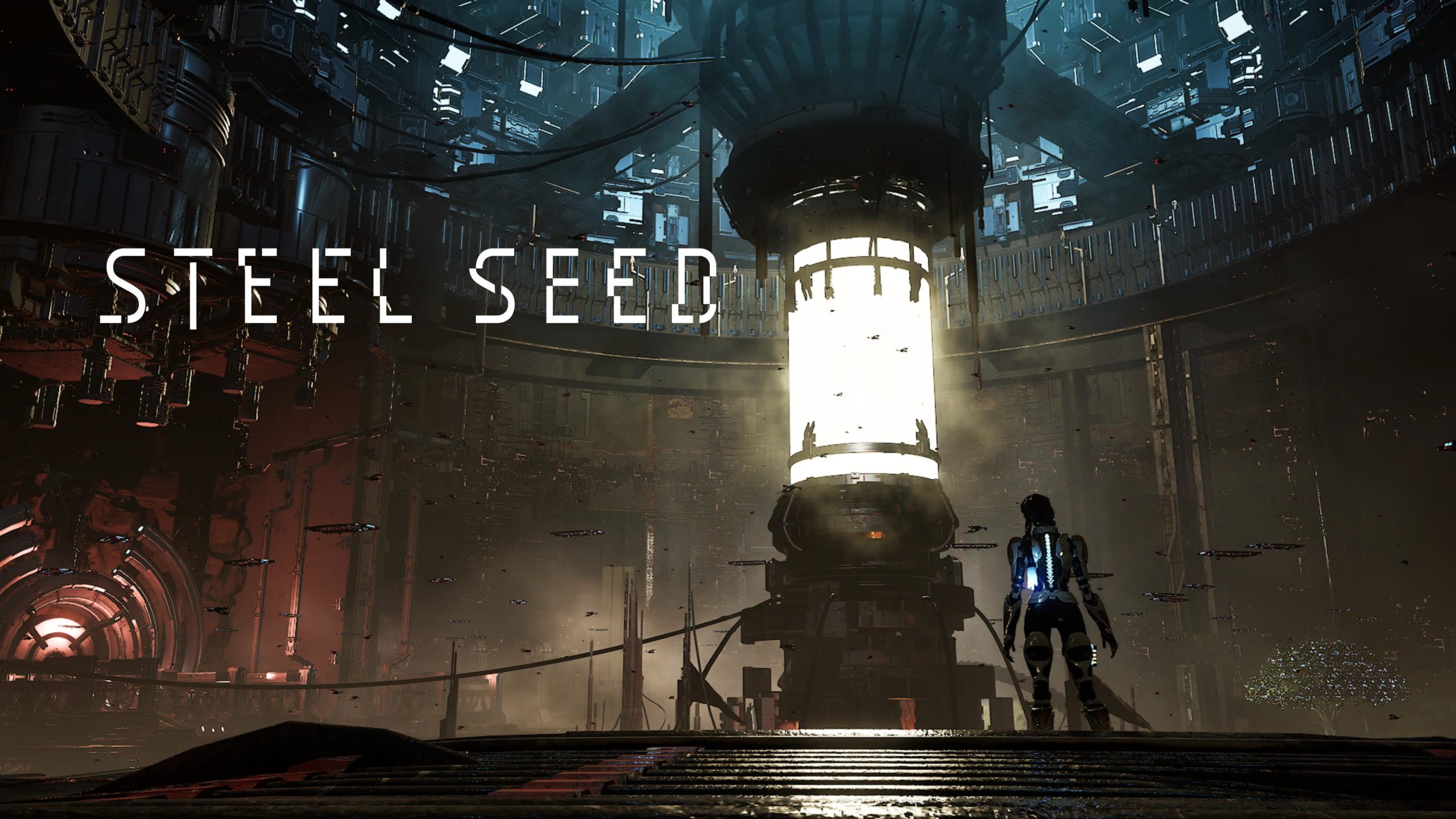Steel Seed looks and plays like an extended run through those dark machine-built cauldrons of Horizon Zero Dawn. Massive yet claustrophobic spaces that only a machine intelligence would dream up and no human was ever really meant to traverse. With your very cool-looking glitch-sword in tow, you’ll be platforming your way through a labyrinth of giga-architecture and ridiculously tight spaces and either assassinating unsuspecting robots, or fighting through the hordes.
Boutros Boutros-Ghali, former UN Secretary General, once said that the best way to deal with bureaucrats is with stealth and sudden violence. I find the same is true of sinister post-apocalyptic robots bent on my destruction. While it can be a blast at times to sneak up on your robot enemies, Steel Seed has a bot-load of jankiness and can really test your patience when it comes to glitches that aren’t part of the AI and robots in the story. Let’s get into it.
Architects Of The Future
You play as Zoe, who awakens thousands of years into the future in an artificial body. Humanity is virtually extinct, and all that seems to populate the planet is AI robots with metal dreads who build really big stuff. When Zoe gets her bearings, it quickly transpires that she is the resurrected daughter of a megalomaniac scientist who, foreseeing the collapse of Earth’s ecosystem, and not trusting humanity to be able to salvage the situation, took it upon himself to freeze many thousands of humans, ready to awaken them and reseed the planet when viable again. Hopefully it wasn’t against their will…
In a jaw-droppingly convoluted and virtually unnecessary excuse to get you exploring, for some unknown reason your father the mad scientist saved four shards of his own uploaded personality in four separate farflung nodes. Each of which takes some two hours of platforming and fighting to reach. He couldn’t have just put it in one place?
You are helped on your quest by a Jarvis-like butler AI who’s been sitting about reading books for millennia waiting for the system to decide you can be awakened, and a spy-drone called Koby who goes along with you for the ride. Koby is very helpful to the gameplay and mission, but again, story-wise, he could have done the entire thing himself – flown to any area, and downloaded the personality shards.
Making Zoe’s quest to reawaken humanity harder rather than easier is an AI combat robot called Hogo, who in a wonderful backstory, has been driven insane by consuming human online content for millennia (it doesn’t take that long imo). He is convinced that humans will just repeat their planet-killing ways if revived, and to be fair to him, when I’m wading through the AI swill we currently have for an Internet, I’ve been known to feel the same. Love feeling like a nihilistic robot villain has actually got us pegged.
I’ll leave the rest of the plot as it would verge on spoilers. Zoe is likeable enough but her little quips with Koby get a little wearing and you can never hear his side of the conversation as he just boops like R2D2. If my synopsis hadn’t already clued you in, the narrative didn’t do much for me, rarely rising above cliché and almost never giving me a compelling reason to care. Zoe questions far too little of her situation, and there are holes in the plot you could drive a gigaton snake drill through.

The Best Way To Deal With Robots…
Steel Seed is a game made up of its favourite influences. When it comes to the oil-slipping wall-running, ledge-clinging platforming it’s as close to Jedi Survivor as you can get, jankiness and all. Zoe can flow from one ledge to another with some fluidity and you’ve seen the like in Ghostrunner and Uncharted for example.
However platforming accuracy is spotty at best. I lost count of the times I couldn’t move into the right area due to invisible blockages, slid past handholds, fell through the terrain or became trapped in it, or did all of the above while in combat.
When you aren’t shimmying around like a Jedi, you are fighting with a glitchy light swor- wait a minute, you are a robot Jedi. Zoe’s lightsabre can’t deflect bullets unfortunately, and the robot enemies can pack a punch especially if there’s more than one. Instead the focus of Steel Seed is really on stealth.
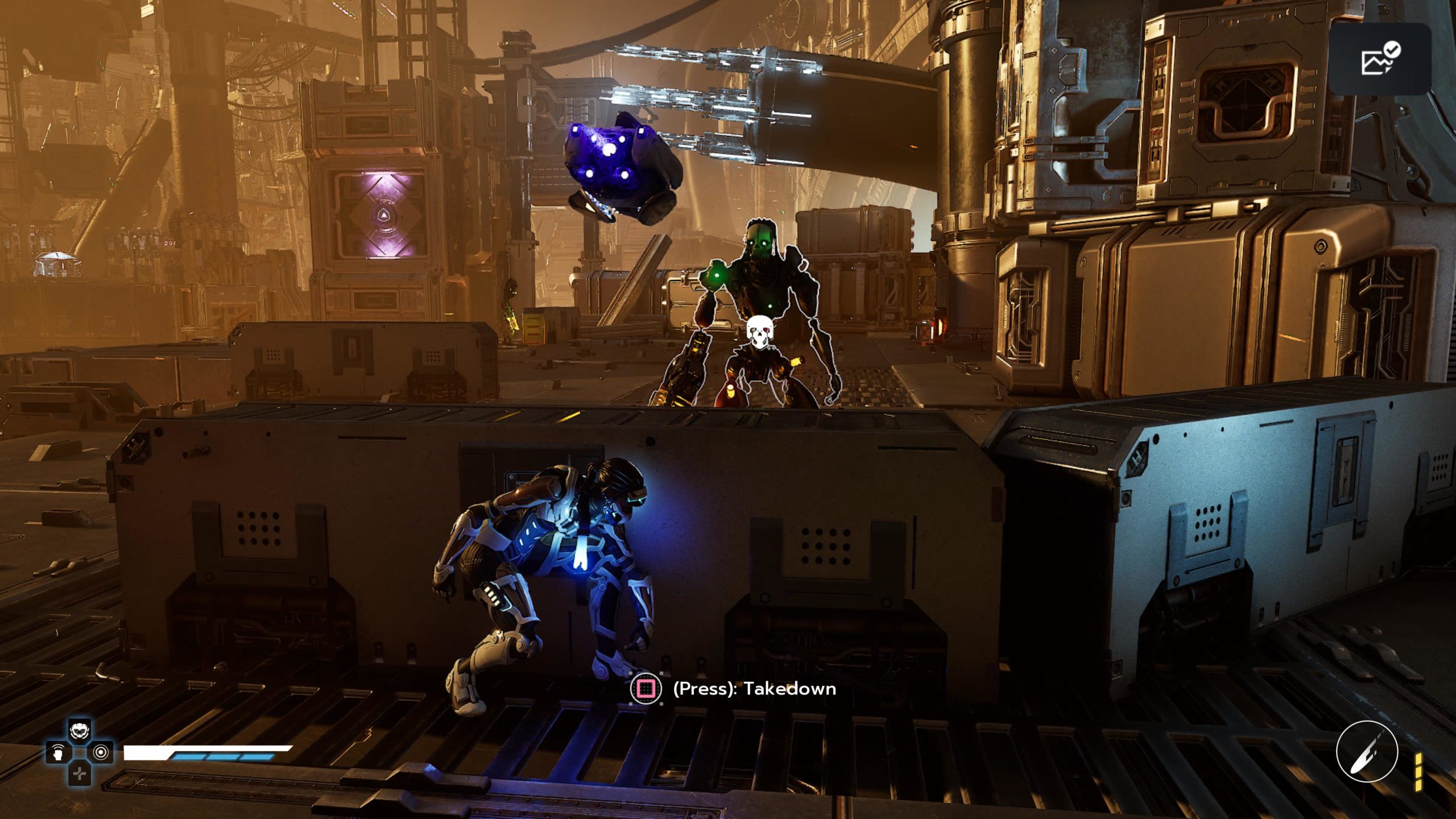
…Is With Stealth…
Steel Seed’s stealth system harks back to the good old days of cover shooters. Oh I miss those days. You press R1 to literally snap to a wall and you are in cover. For a game so obsessed with AI, it’s ironic that Steel Seed’s enemy AI is kind of pants, and although they can see you from across a room, they can barely ever sense you when you are in sniffing distance of their exhaust ports. You will find it very easy to run rings around them, lose them by disappearing in a glitch field (the sci-fi equivalent of tall grass), or behind a wall.
These robot’s subroutines are quick to snap back to their preordained patrol routes as they only search for you for a few moments before everything is back to normal. Thankfully stealth in Steel Seed can still be pretty satisfying and fun. There are copious areas and moments where you can get the literal drop on an enemy, soaring through the air like a crouching tiger and then slamming that digital sword right through them. Zoe really does move more like some strange mix of human and predatory cat, which makes sense in an artificial body. Why be constrained by millennia-old human joint directions?
You also have Koby as a first person spy drone to scope out the area before you attempt a perfect stealth run. They can mark enemies, fire off distractions, mines (that are very useable and effective in a boss fight), or to shoot environmental danger items to fall on unsuspecting robot’s heads. Most of it is unnecessary though when you can simply roll up behind them and plunge the sword home, and they never suspect a thing.
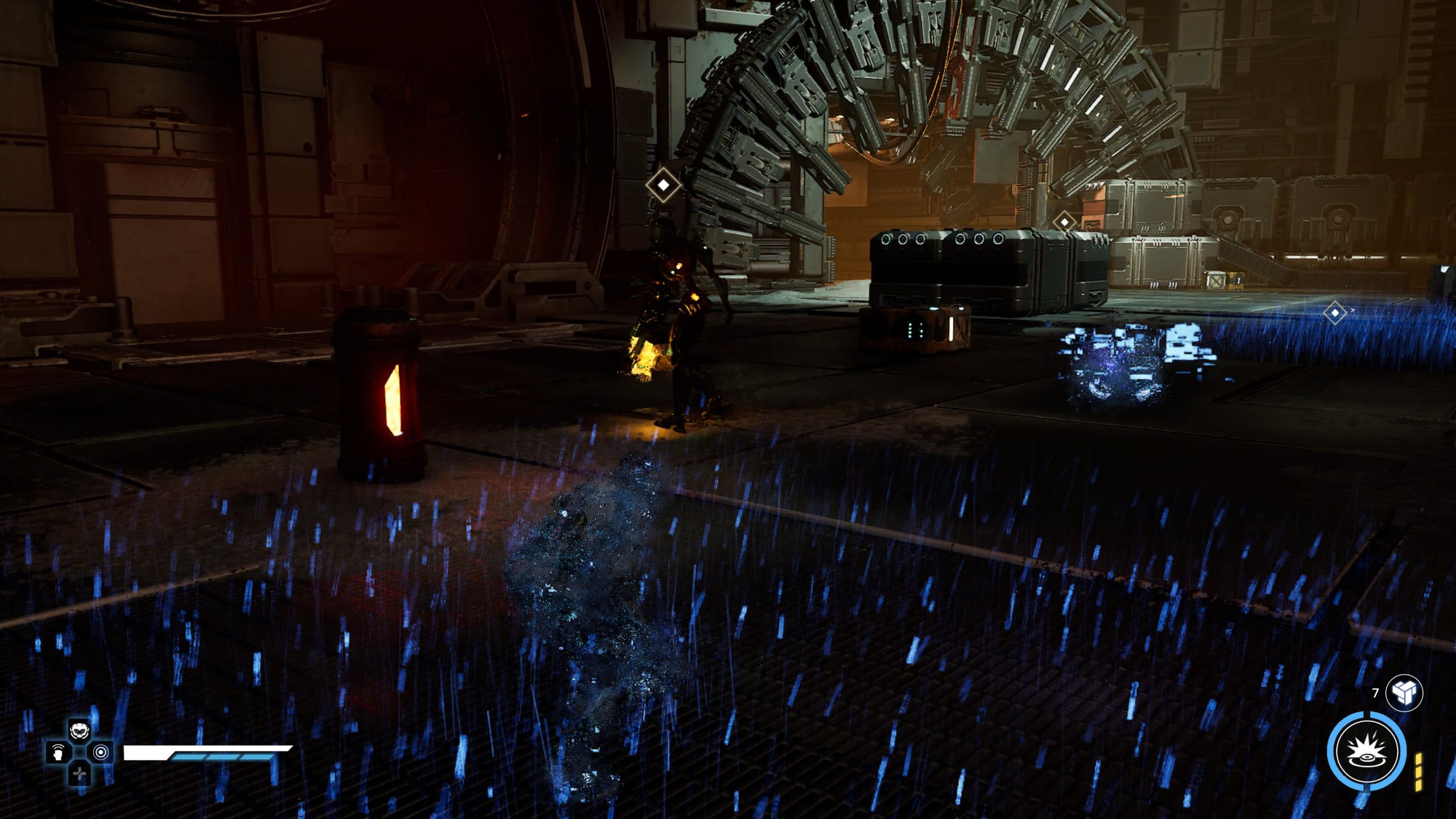
…And Sudden Violence
Let no man or robot label Steel Seed a soulslike. While you have a few tiny similarities (save points respawning enemies and difficult, dodge-requiring battles) the game is an action adventure through and through. There is a currency you collect from the dead, but it is used solely for buying abilities, rather than for any kind of stat-enhancing system.
That said, combat is hard especially if you get ganged-up on, but mainly because the game doesn’t do much to help you and it’s glitches and bugs get in the way. Steed Seed disengages your lock on after each successful kill, forcing you to re-establish it each time, else an enemy off-screen pounces on you. The camera likes to get in a tight spot, or Koby sits in the way of it.
I found the dodging very unresponsive, and although I could often do the first one well, plenty of enemies had a second and then third attack to dodge, and these were usually beyond me. As that was so unreliable, I resorted to other tactics like running off and sweeping back into combat from elsewhere, or letting combat scenarios lapse into stealth again as they lost track of me hiding out, ala Arkham Asylum.
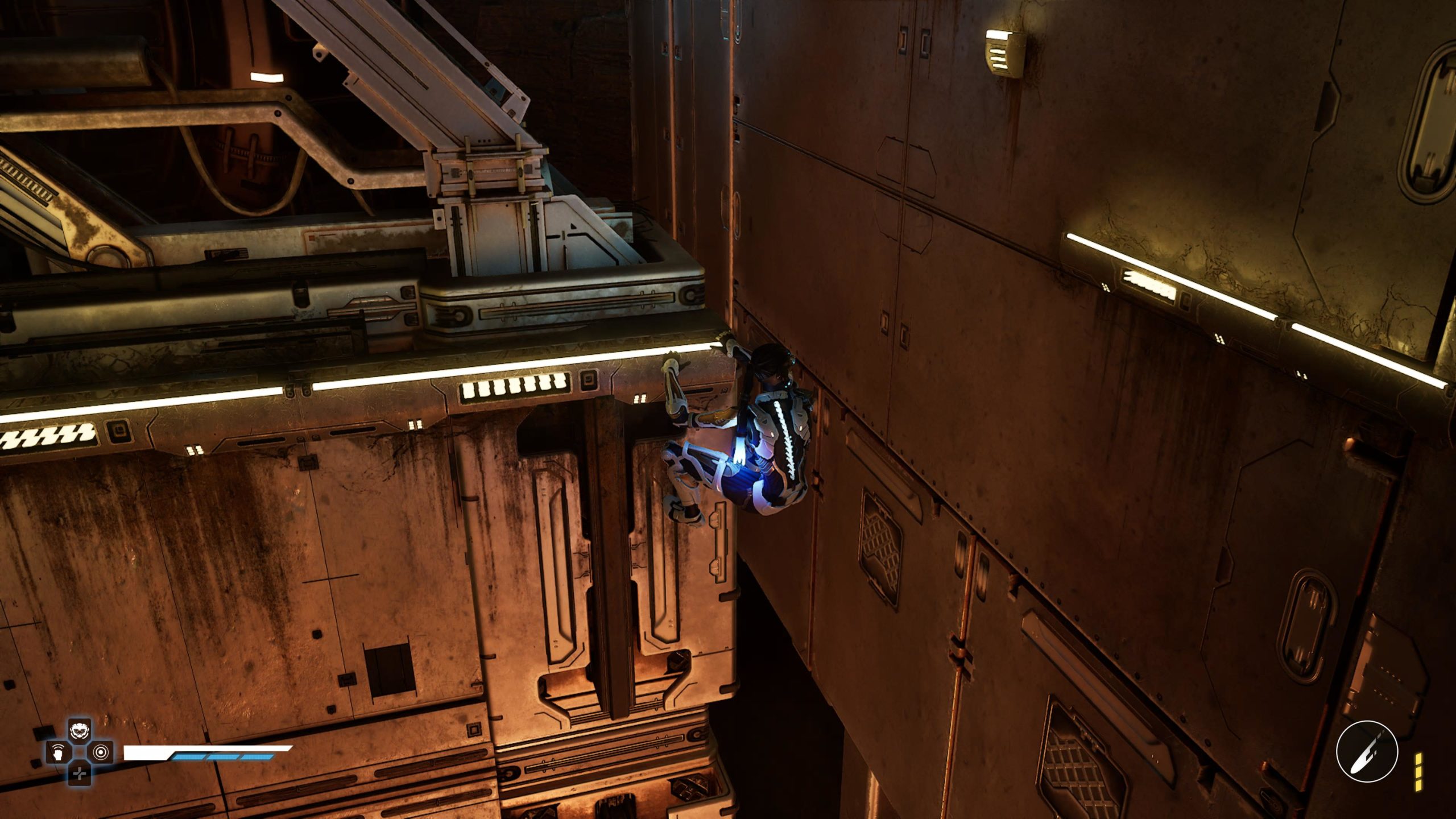
GlitchMOB
The worst thing was when you were forced into bosses, and then had to use the combat moves when you’d spent most of your time practicing a more stealthy approach. I generally couldn’t just stick the bosses from behind and be done with them. There’s very little in the way of instruction and I couldn’t tell if it was oversight or deliberate lack of information. Bosses often had new moves you’d never seen before, and had no viable options to counteract with.
One boss nearing the five hour mark was a heavy punching type who could smash the floor, virtually killing you outright every time without much telegraphing. I lost count of the times I died trying to dodge or jump out of the target area, only to be wasted. Eventually the only way to win was to exploit a glitch, by accident of course. I laid mines that I had discovered were very effective against him, and when he did his ground pound twice he basically killed himself. The reason I say it was a glitch is that I still got killed in the final blast, and Steel Seed reloaded as if I won. I mean, we died at the same time, so… Actually no I’m not going t question it, I’m just glad I was able to carry on.
It’s that kind of game. Steel Seed moves a bit weird, plays a bit weird, looks a bit weird, and for a few hours, that’s fine. But beyond that, it becomes frustrating, and detrimental to your continued enjoyment. The graphics are passable, but certainly look a generation behind at this point, and aren’t well put together. It would look pretty good for a two-generation-ago game. I couldn’t really tell you of any memorable music, and the sound effects liked to cut out quite often, leaving Zoe talking in an echo chamber.
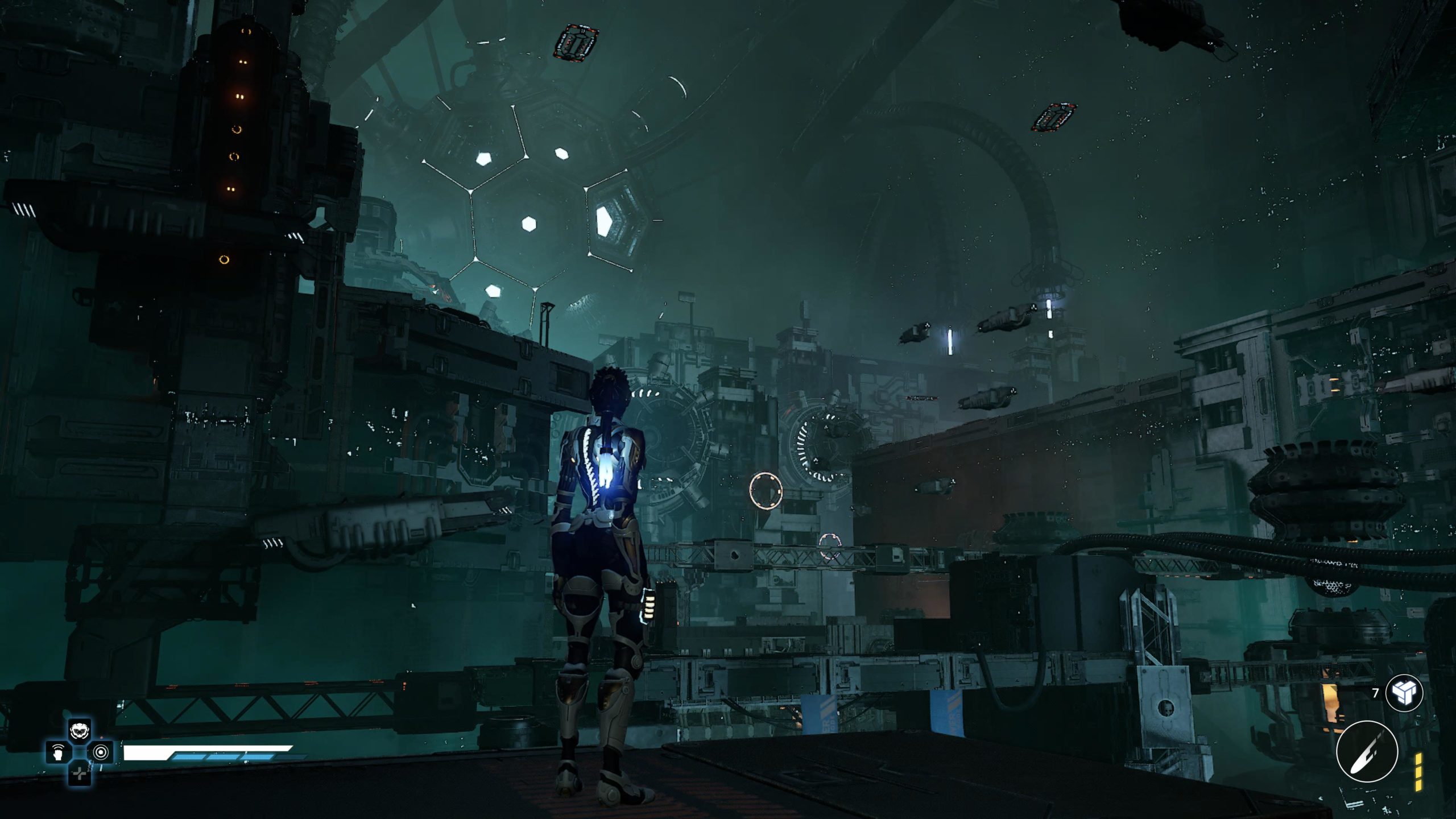
On The Shoulders Of Giants
While on the surface Steel Seed can look quite janky, it’s only after playing it for a few hours that you see that jankiness has some real depth to it. It’s deep in the subroutines of the enemy AI, in the base combat movement and lock-on issues. The graphics feel just that little bit off (especially Zoe’s eyes for example), the combat controls aren’t responsive enough, the environments have holes in, and the stealth is far far too easy for a game with this focus.
On the plus side, Steel Seed was a fun, relatively upbeat and undemanding way to lose 10-12 hours. Upbeat despite being a post-apocalyptic hellscape of AI-built architecture where the human purpose has been largely forgotten. And like that great architecture, Steel Seed is an imitation of other greater games that came before it, but not quite as great in comparison.
Steel Seed is out now for PlayStation 5 (review platform), Nintendo Switch, Xbox Series S/X and PC via Steam.
Developers: Storm in a Teacup
Publisher: ESDigital Games
Disclaimer: In order to complete this review, we were provided with a promotional copy of the game. For our full review policy, please go here.
If you enjoyed this article or any more of our content, please consider our Patreon.
Make sure to follow Finger Guns on our social channels. Twitter, Facebook, Twitch, Spotify or Apple Podcasts – to keep up to date on our news, reviews and features
